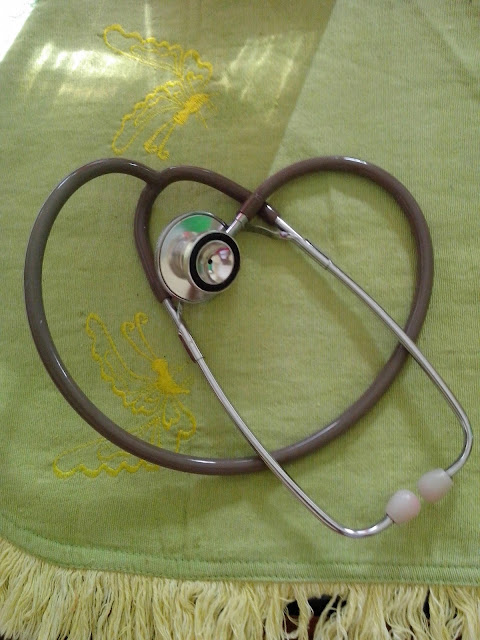A stethoscope is a medical device for listening to sounds inside the body. The initial stethoscope was invented in the early 19th century by French physician Ren� Laennec, but was actually trying to achieve a rather different end: doctor-patient distance....
Wednesday, August 28, 2013
Gorengan Lezat Namun Biang Kolesterol?
Beberapa orang menyebutkan bahwa makanan yang digoreng adalah musuh bagi tubuh... Benarkah? Pada dasarnya tubuh kita juga memerlukan kolesterol dengan kadar tertentu, namun kandungan minyak untuk menggoreng biasanya bisa menyebabkan naiknya kolesterol jahat (LDL).
Apakah semua minyak goreng pasti mengandung lemak jenuh penyebab kolesterol...?
Ada cara lho yang dapat kita lakukan agar tubuh tetap sehat meski suka sekali makan goreng-gorengan. Diantaranya adalah menggunakan minyak untuk menggoreng dua kali atau tiga kali saja, tiriskan makanan setelah digoreng dan letakkan pada kertas yang dapat menyerap kadar minyak dalam makanan, jangan terlalu sering mengkonsumsi gorengan di penjual pinggir jalan, gunakan minyak zaitun atau minyak dengan kadar lemak jenuh yang rendah.
Selanjutnya terserah Anda.
Electrocardiography: Equipment Preparation
The standard 12-lead ECG uses a series of electrodes placed on the extremities and the chest wall to assess the heart from 12 different views (leads). The 12 leads consist of three standard bipolar limb leads (designated I, II, III), three unipolar augmented leads (aVR, aVL, aVF), and six unipolar precordial leads (V1 to V6). The limb leads and augmented leads show the heart from the frontal plane. The precordial leads show the heart from the horizontal plane.
The ECG device measures and averages the differences between the electrical potential of the electrode sites for each lead and graphs them over time. This creates the standard ECG complex, called PQRST. The P wave represents atrial depolarization; the QRS complex, ventricular depolarization; and the T wave, ventricular repolarization. (See Reviewing ECG waveforms and components.)
Today, ECG is typically accomplished using a multichannel method. All electrodes are attached to the patient at once, and the machine prints a simultaneous view of all leads.
ECG machine ; recording paper ; disposable pregelled electrodes ; 4″ × 4″ gauze pads ; optional: clippers, marking pen.
Preparation of equipment
Place the ECG machine close to the patient's bed, and plug the power cord into the wall outlet. If the patient is already connected to a cardiac monitor, remove the electrodes to accommodate the precordial leads and minimize electrical interference on the ECG tracing. Keep the patient away from objects that might cause electrical interference, such as equipment, fixtures, and power cords.
Tuesday, August 27, 2013
Cardiovascular Disorders: The Leading Cause of Death
Saturday, August 24, 2013
Focus Charting System As Nursing Documentation Tool
- Focus: Nursing diagnosis, client problem/concern, signs/ symptoms of potential importance (e.g., fever, dysrhythmia, edema), a significant event or change in status or specific standards of care/agency policy.
- Data: Subjective/objective information describing and/or supporting the Focus.
- Action: Immediate/future nursing actions based on assessment and consistent with/complementary to the goals and nursing action recorded in the client plan of care.
- Response: Describes the effects of interventions and whether the goal was met.
You can find charting examples that based on the data within the client situation by using google search.




